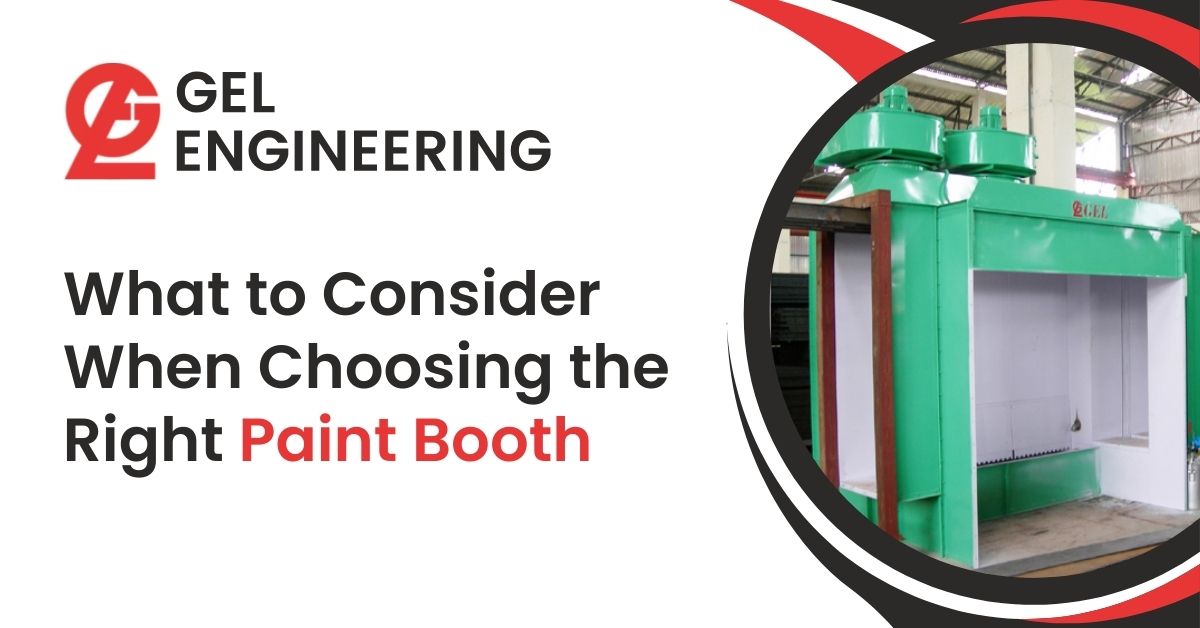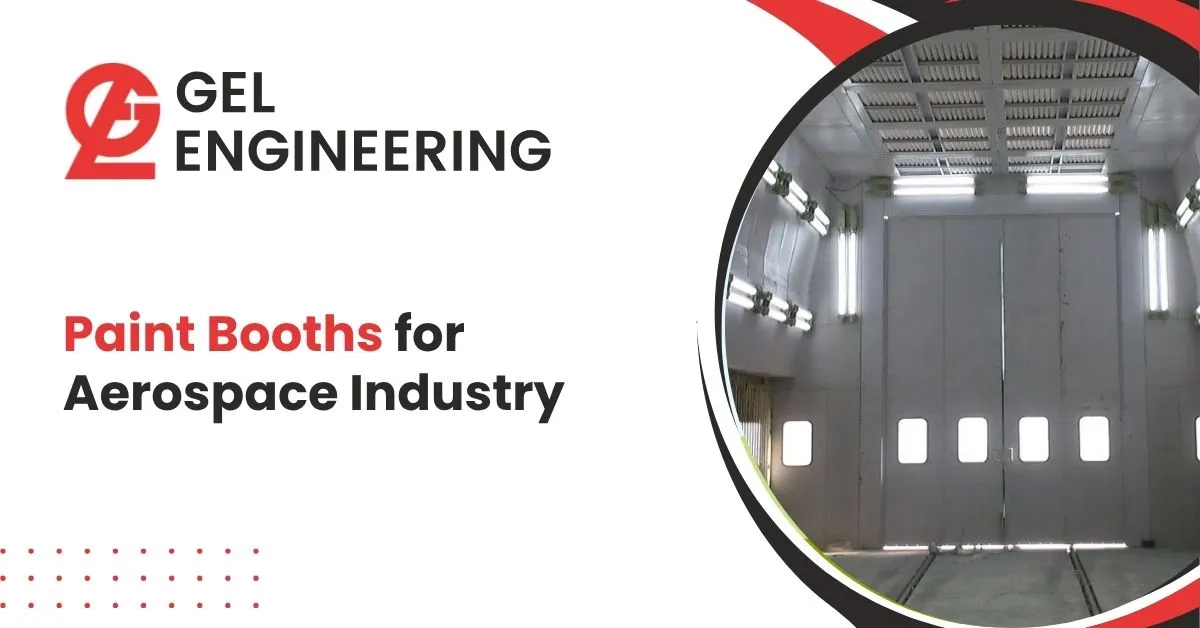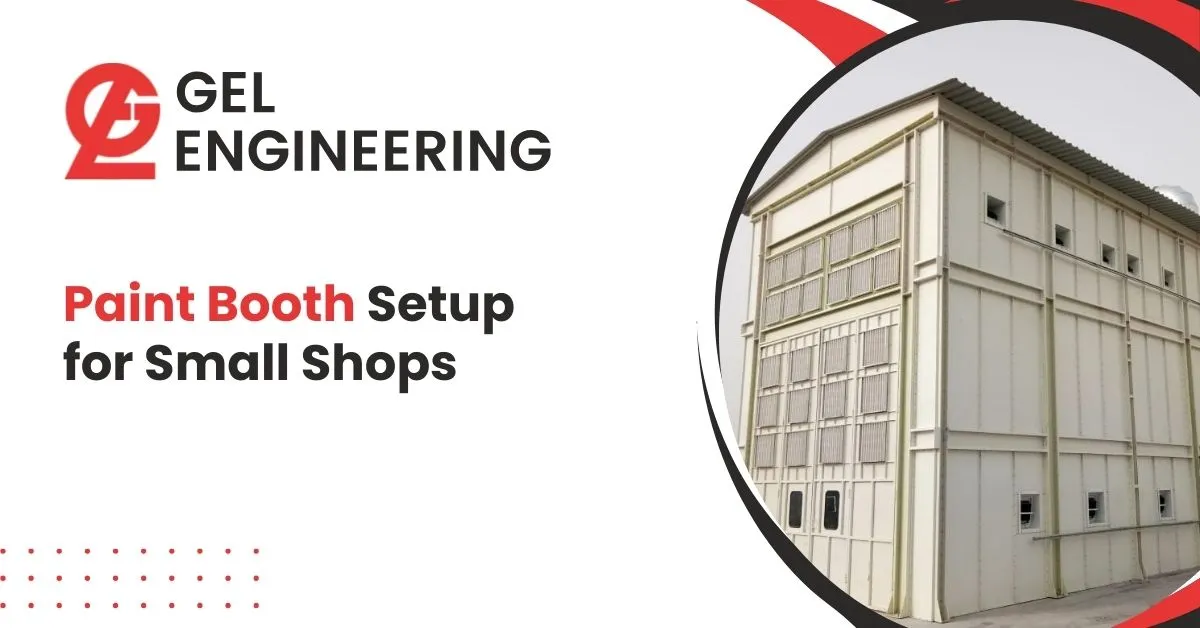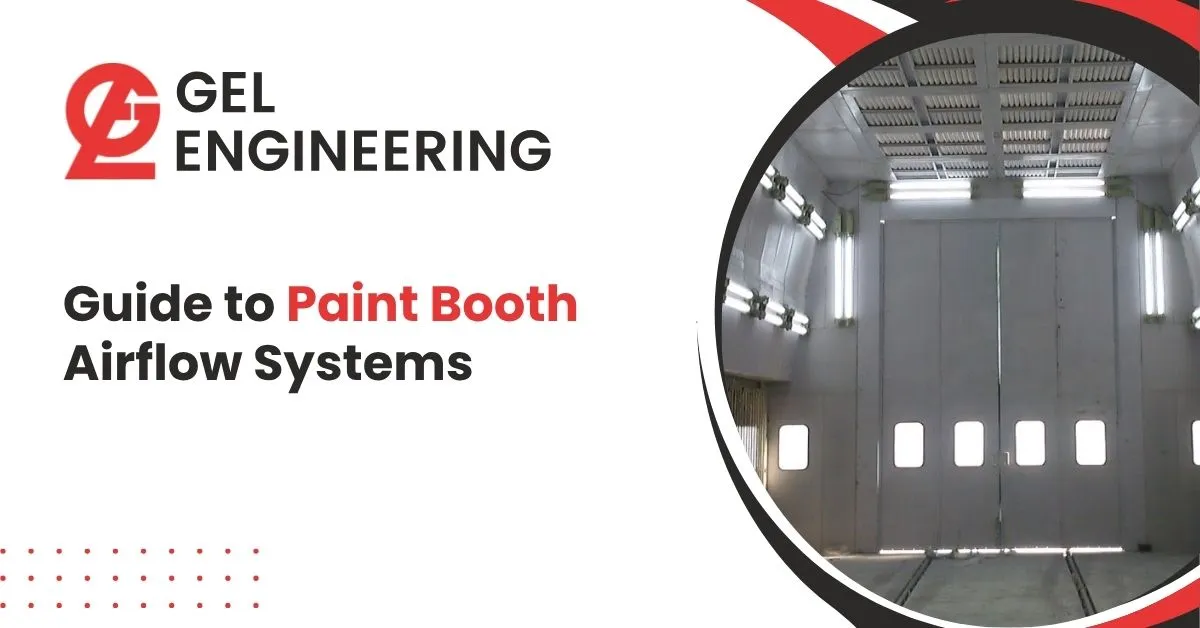In the aerospace industry, precision, durability, and quality control are non-negotiable. One of the most…

When it comes to painting things like cars, furniture, or even airplanes, having the right paint booth is super important. A good paint booth helps you get a great finish and keeps everyone safe while working. With so many choices available, it can be tricky to pick the best one. In this guide, we’ll break down everything you need to think about when choosing a paint booth, including its size, structure, ventilation, heating, filtration, safety standards, and the latest trends.
Table of Contents
How to Choose a Paint Booth?
Assess Your Needs
The first thing you need to do is think about what you need. Here are some questions to help you out:
- What will you be painting? Think about the size and type of the items (like metal, wood, or plastic).
- How much work will you do? Are you painting a few things each day or a lot more?
Evaluate Your Space
Next, you should look at the space where you plan to put the paint booth. Here’s what to check:
- How much floor space do you have? Measure the area to see how big the booth can be, while also leaving room for people and tools.
- How high is the ceiling? Make sure you have enough height for tall items and proper airflow.
Determine Your Budget
Setting a budget is essential to keep your spending in check. Consider both the price of buying the paint booth and how much it will cost to maintain it. Look for different options and get quotes from manufacturers.
Ready to elevate your painting quality? Explore our range of paint booth and experience superior finishes today!
What is the Structure of a Paint Booth?
The structure of a paint booth is crucial for achieving high-quality finishes while ensuring the safety of operators. Various types of paint booths—such as Dry Paint Booths, Down Draft Paint Booths, Laboratory Paint Booths, and Retractable Paint Booths—each have unique designs tailored to specific painting applications. In this section, we will explore the essential components that make up the structure of a paint booth, highlighting how each element contributes to its overall function and effectiveness. The structure of a paint booth is important for how well it works. Here are the main parts:
Walls
The walls of a paint booth are usually made from strong materials like metal. They should be easy to clean so that paint doesn’t build up and cause problems.
Ceiling
The ceiling is crucial because it needs to have bright lights. Good lighting helps you see what you’re painting clearly, which is important for getting a perfect finish.
Floor
The floor should be smooth and easy to clean. Some booths have sloped floors to help with drainage, preventing paint from pooling in one spot.
How to Choose the Size of a Paint Booth?
Picking the right size for your paint booth is very important. Here’s how to decide:
Identify the Largest Item
Think about the biggest item you will be painting. Your paint booth should be big enough to fit this item with extra room around it.
Account for Workflow
Think about how people will move around in the booth. Make sure there’s enough space for tools, materials, and operators to work without bumping into each other.
Consider Future Needs
If you think you might do more work in the future, it might be smart to get a bigger booth now. This way, you won’t have to buy a new one later.
What Types of Ventilation Are There for Paint Booths?
Good ventilation is important to keep the air clean and safe. Here are the main types of ventilation systems:
Cross-Draft Ventilation
In this system, air flows from one side of the booth to the other. Fresh air comes in from one side while dirty air goes out from the other side. It’s simple but may not remove overspray very well.
Down-Draft Ventilation
This system pulls air from the top and pushes it out through the floor. This helps remove overspray and keeps the air cleaner.
Semi-Downdraft Ventilation
This system combines both cross-draft and down-draft ventilation. Air comes in from the top and exits from the sides, offering a balanced airflow.
What Type of Heating Can Be Used in Paint Booths?
Heating is important for making sure the paint sticks well and dries properly. Here are common heating options:
Gas Heating
Gas heaters provide a lot of heat and are often used in larger booths. They can quickly warm up the space, but they need to be vented to avoid dangerous fumes.
Electric Heating
Electric heaters are safer and easier to install than gas heaters. They work well for smaller booths and provide steady heat for painting.
Infrared Heating
Infrared heaters give quick, focused heat that helps paint dry faster. This type of heating is great for large items because it can reach the paint more effectively.
What Filtration Method Should You Choose for Your Paint Booth?
Filtration systems are important for keeping the air clean and removing harmful particles. Here are the main filtration methods:
Mechanical Filters
These filters catch bigger particles like dust and overspray. They’re usually used as pre-filters and need to be changed regularly.
HEPA Filters
HEPA filters trap very small particles, which helps keep the air inside the booth clean. They are great for preventing harmful stuff from entering the booth.
Activated Carbon Filters
Activated carbon filters remove bad smells and chemicals from the air. They are especially useful when working with solvent-based paints, helping to keep the air fresh.
What is the Current Safety Standard for Paint Booths?
Keeping everyone safe in paint booths is super important. Here are key safety standards to know:
OSHA Regulations
The Occupational Safety and Health Administration (OSHA) has rules for ventilation, fire safety, and worker safety in paint booths. Following these rules is crucial for a safe workplace.
NFPA Guidelines
The National Fire Protection Association (NFPA) has fire safety standards that apply to paint booths. Following these guidelines helps reduce fire risks when using flammable materials.
Paint Booth Trend: Connected Booths
Paint booths are starting to use smart technology. Here are some benefits of connected paint booths:
Real-Time Monitoring
Connected paint booths can monitor conditions like temperature and airflow. This data helps operators make adjustments to keep things just right for painting.
Predictive Maintenance
Smart technology can alert operators when maintenance is needed before problems occur. This helps reduce downtime and keeps the booth running smoothly.
Data Analytics
Connected booths allow manufacturers to analyse production data. This information can help improve efficiency and the quality of work done in the booth.
Frequently Asked Questions
What size paint booth do I need?
The size you need depends on the biggest items you will paint and how many items you will be working on at once.
How often should I clean the paint booth?
It’s best to clean the booth after each use or at least once a week to keep the area safe and effective.
Can I use a paint booth for all types of coatings?
Most booths can handle different types of coatings, but make sure they work with your ventilation and filtration systems.
How much does a paint booth cost?
Prices can vary widely based on size and features. It’s best to get quotes from different manufacturers to find what works for you.
Conclusion
Choosing the right paint booth is extremely important for getting great finishes and keeping everyone safe. away considering sized Structure airing heat filtration and guard standards you get the down stall for your necessarily. With new Tech like connected booths the future of painting looks bright. investment inch the good rouge stall get service you be break abide good and reach awesome results inch your picture projects
Related Guides: Spray Painting Plant




